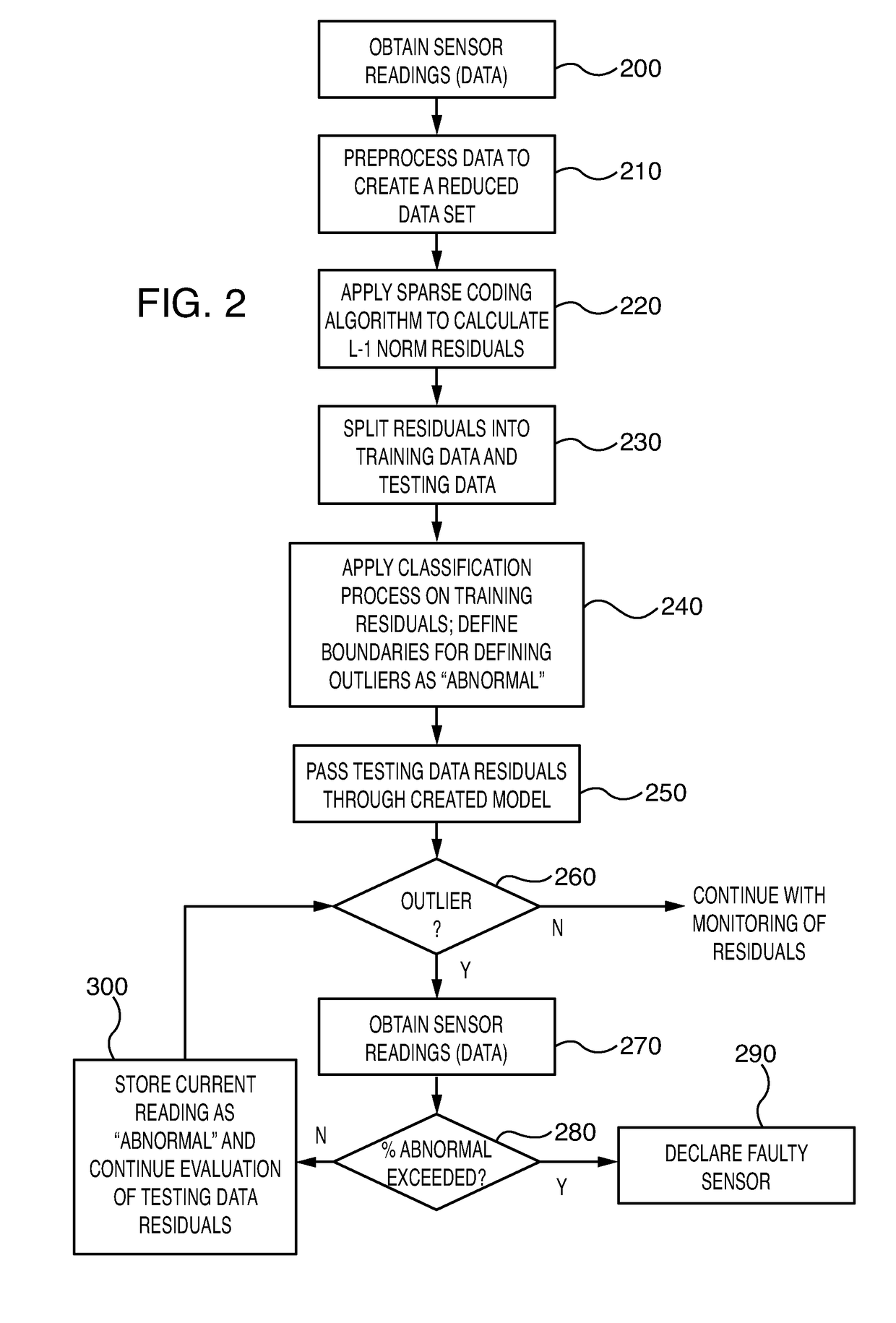Gas turbine sensor failure detection utilizing a sparse coding methodology
- Summary
- Abstract
- Description
- Claims
- Application Information
AI Technical Summary
Benefits of technology
Problems solved by technology
Method used
Image
Examples
Embodiment Construction
[0022]FIG. 1 is a simplified depiction of a typical gas turbine power plant 1 with a generator 2 supplying a plant electric load 3. Generator 2 is driven by a shaft 4 powered by a gas turbine engine 5. Gas turbine engine 5 is itself comprised of a large number of separate components, including a compressor 5.1, a combustion section 5.2, a turbine 5.3, and, perhaps, a set of adjustable inlet vanes 5.4.
[0023]Fuel is supplied to combustion section 5.2 via a valve 6. In order to maintain acceptable operation of gas turbine power plant 1, a number of sensors 7 are used to monitor the operation of the various components, passing the measured sensor readings to a separate control module 8. Control module 8 may be co-located with gas turbine power plant 1, or may be off-site from the turbine itself. In the diagram of FIG. 1, sensors 7 include a combustor inlet air sensor 7.1, a combustion temperature sensor 7.2, and a blade path temperature sensor 7.3. It is to be understood that there are ...
PUM
 Login to View More
Login to View More Abstract
Description
Claims
Application Information
 Login to View More
Login to View More - R&D
- Intellectual Property
- Life Sciences
- Materials
- Tech Scout
- Unparalleled Data Quality
- Higher Quality Content
- 60% Fewer Hallucinations
Browse by: Latest US Patents, China's latest patents, Technical Efficacy Thesaurus, Application Domain, Technology Topic, Popular Technical Reports.
© 2025 PatSnap. All rights reserved.Legal|Privacy policy|Modern Slavery Act Transparency Statement|Sitemap|About US| Contact US: help@patsnap.com



